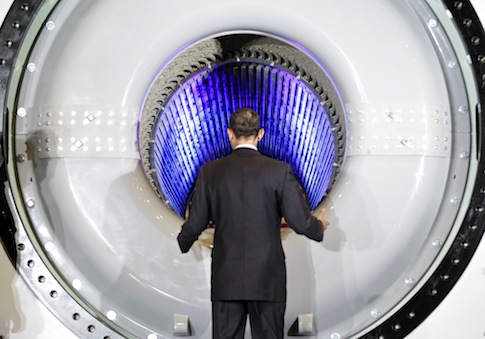There are more "green jobs" in the American coal and petroleum manufacturing sectors than there are in the solar and wind energy power generation sectors, according to data released Tuesday by the federal government.
The jobs numbers, released Tuesday in the Bureau of Labor Statistics’ annual report on "Employment in Green Goods and Services," were cited by critics as evidence that the definition of "green jobs" is overly broad and not useful as confirmation that efforts to promote renewable energy or other commonly associated initiatives lead to a boost in employment.
William Yeatman, an energy policy expert with the Competitive Enterprise Institute, called the BLS report "absurd." Its definition of green jobs, he said, "is impossibly broad."
"There isn’t a sector of the economy that isn’t green if you believe this report," Yeatman added.
BLS declined to comment on criticism of its green jobs definition.
Rep. Mike Pompeo (R., Kan.), a member of the Energy and Commerce Committee who has sponsored legislation to repeal energy tax credits, called BLS’s methodology "questionable."
"This report appears to be highly inaccurate and I would question whether there is any value in keeping track of green jobs in the first place," Pompeo said in a statement to the Washington Free Beacon.
"Many of these jobs being counted as ‘green’ are not green and not new," Pompeo added. "BLS is counting green jobs to include bus drivers, trash collectors, radio broadcasters, and movie producers."
The BLS report is the second annual tally of the nation’s "green jobs" and will be the last. The report will be discontinued due to sequestration budget cuts that took effect this month.
Center for American Progress fellow Bracken Hendricks told Businessweek the report’s demise "means the U.S. will be flying blind on the growth of a very, very important sector in the U.S. economy."
Critics of the survey, though, say it was too broad to divine any meaningful economic information.
The report does not actually examine one sector of the economy, as Hendricks suggested. It classifies scores of industries as "green."
Some of those sectors speak to the vagueness of BLS’s "green jobs" definition. The bureau includes clothing stores, television and radio broadcasters, and office furniture manufacturers among the country’s green industries.
"This is a political document, not a disinterested statistical analysis," Yeatman said. "That said, it’s conspicuously silly, so its political utility is somewhat limited."
President Barack Obama pledged on the 2008 campaign trail to create 5 million green jobs. The BLS report claims that 3.4 million Americans are employed in such jobs.
Pompeo said BLS was "simply reclassifying existing jobs in an effort to mask the president’s failure to live up to his green jobs promise."
"The BLS report paints a rosy picture that we’re well on our way to reaching" the president’s green jobs goal, said Heritage Foundation energy policy expert Nick Loris, "but you don’t have to scratch the surface too deeply to realize that these numbers are bogus."
Those numbers have been used to support claims that "the clean-economy" sector employs more Americans than the country’s oil and gas sector.
However, oil and gas jobs are included in BLS’s list of green jobs, as are a host of industries—including coal mining, chemical production, and nuclear energy—that environmentalists frequently criticize as detrimental to what the president calls "our clean energy future."
The BLS report shows that the 3,278 green jobs in the coal and petroleum-manufacturing sector, generally considered the antithesis of "clean energy," outnumber the 3,246 green jobs in the solar and wind power generation sectors.
